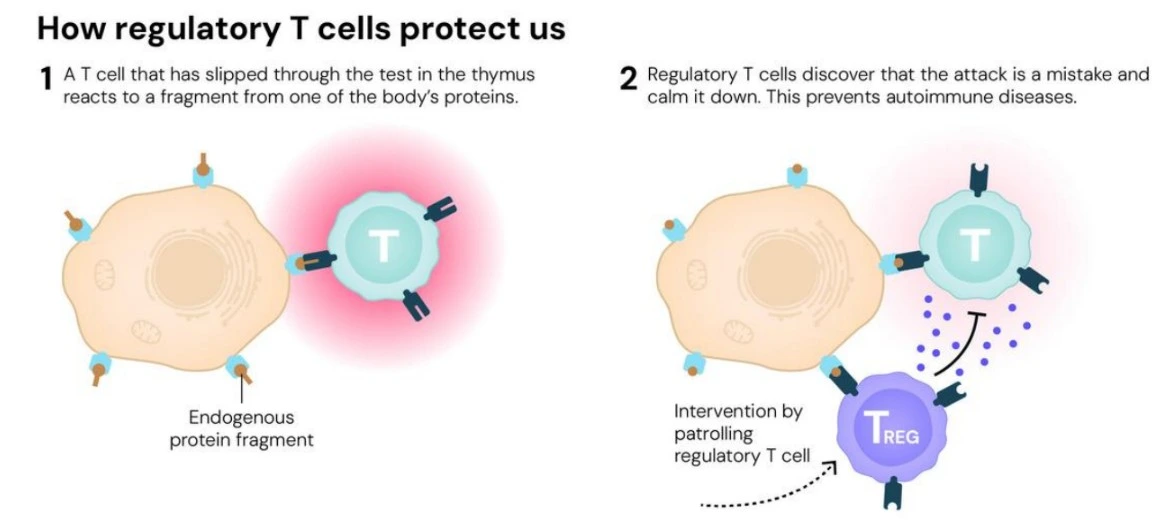The 2025 Nobel Prize in Physiology or Medicine recognised discoveries on regulatory T-cells (Tregs) and FOXP3, transforming understanding of autoimmune regulation and self-tolerance.
- Mary Brunkow, Fred Ramsdell and Shimon Sakaguchi have been honoured for their work on deciphering the intricacies of the immune system.
About Nobel Prize
- Origin: Established under the will of Alfred Nobel (1833–1896), the inventor of dynamite, the Nobel Prizes have been awarded annually since 1901 to honour outstanding contributions to humanity.
- Categories: The prizes are awarded in six fields — Physics, Chemistry, Physiology or Medicine, Literature, Peace, and Economic Sciences (the last added in 1969 by the Swedish Central Bank).
- Awarding Institutions:
-
- Physics, Chemistry, and Economics – Royal Swedish Academy of Sciences
- Physiology or Medicine – Karolinska Institute, Sweden
- Literature – Swedish Academy
- Peace Prize – Norwegian Nobel Committee, Oslo
- Components of the Award: Each Nobel Prize includes a gold medal, a diploma, and a monetary award (currently 11 million Swedish kronor in 2025).
|
Understanding the Immune System
- The human body has a powerful and complex immune system, which not just fights off various bacteria and viruses, but also knows what cells should not be attacked.
- Immune Defence Mechanism: The human immune system fights thousands of microbes daily using specialized cells like T cells, which detect and destroy pathogens.
About T-Cells
- Definition: T-cells are a type of white blood cell (lymphocyte) that play a vital role in the immune response.
- Function: Their primary role is cytotoxic — they detect and destroy abnormal or infected cells, including those affected by viruses or cancer.
- Types:
-
- Helper T-cells – Monitor the body and trigger immune alerts when an infection is detected.
- Killer T-cells – Directly attack and eliminate invading pathogens or infected cells.
|
- Challenge of Self-Tolerance: The immune system must also recognise the body’s own cells and prevent attacking them.
- Failure of this mechanism leads to autoimmune diseases, where immune cells mistakenly destroy healthy tissues.
- Role of the Thymus (Central Tolerance): For decades, scientists believed that the thymus gland ensured immune self-tolerance by eliminating harmful T cells during maturation — a process called central tolerance.
- However, this could not explain why some self-reactive immune cells still circulate in healthy individuals.

Shimon Sakaguchi’s Contribution (1990s)
- In the mid-1990s, Japanese immunologist Shimon Sakaguchi challenged existing understanding by showing that a special class of T cells acts as “security guards” of the immune system.
- Through experiments in mice, he demonstrated that when these cells were removed, animals developed severe autoimmune disorders, while restoring them prevented disease.
- He named them Regulatory T cells (Tregs) — immune cells that suppress excessive immune reactions and maintain peripheral tolerance.
- His work laid the foundation for the concept of peripheral immune tolerance, ensuring the immune system remains balanced.
Brunkow and Ramsdell’s Contribution
- Around the same time, American scientists Mary Brunkow and Fred Ramsdell were studying sick male mice that developed fatal autoimmune disorders. Their genetic analysis revealed a mutation on the X chromosome in a gene they identified and named FOXP3.
- Human Link – IPEX Syndrome: The same mutation was later found in boys suffering from a rare human autoimmune disease, IPEX (Immune Dysregulation, Polyendocrinopathy, Enteropathy, X-linked) Syndrome. This proved that FOXP3 is critical for immune regulation.
Connecting the Two Discoveries
- A few years later, Sakaguchi demonstrated that the FOXP3 gene controls the development and function of regulatory T cells.
- Together, these findings provided the molecular and cellular basis for immune self-tolerance.
Medical and Scientific Significance
- The discoveries explain how the immune system distinguishes between self and non-self, preventing autoimmune disorders.
- New Field of Research: Their work launched the field of immune-regulation biology, leading to research on how to control or modulate immune responses in various diseases.
- Therapeutic Implications:
-
- Autoimmune Diseases: Treatments now focus on boosting regulatory T cells to prevent the immune system from attacking healthy tissues.
- Cancer: Tumours often exploit Tregs as a protective shield to evade immune attack. Research is exploring ways to inhibit Tregs around tumours to enhance immune destruction of cancer cells.
- Organ and Stem Cell Transplants: Understanding Tregs helps in developing therapies to prevent graft rejection and improve transplant success rates.
![]() 7 Oct 2025
7 Oct 2025


